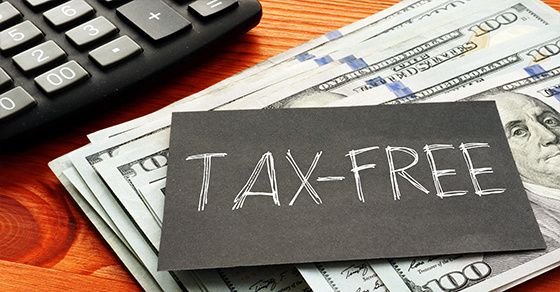6 tax-free income opportunities
Believe it or not, there are ways to collect tax-free income and gains. Here are some of the best opportunities to put money in your pocket without...
2 min read
 Scott Henvey
:
Sep 5, 2024 11:52:47 AM
Scott Henvey
:
Sep 5, 2024 11:52:47 AM

Having a high income may mean you owe two extra taxes: the 3.8% net investment income tax (NIIT) and a 0.9% additional Medicare tax on wage and self-employment income. Let’s take a look at these taxes and what they could mean for you.
In addition to income tax, this tax applies on your net investment income. The NIIT only affects taxpayers with adjusted gross incomes (AGIs) exceeding $250,000 for joint filers, $200,000 for single taxpayers and heads of household, and $125,000 for married individuals filing separately.
If your AGI is above the threshold that applies ($250,000, $200,000 or $125,000), the NIIT applies to the lesser of 1) your net investment income for the tax year, or 2) the excess of your AGI for the tax year over your threshold amount.
The “net investment income” that’s subject to the NIIT consists of interest, dividends, annuities, royalties, rents and net gains from property sales. Wage income and income from an active trade or business aren’t included. However, passive business income is subject to the NIIT.
Income that’s exempt from income tax, such as tax-exempt bond interest, is likewise exempt from the NIIT. Thus, switching some taxable investments to tax-exempt bonds can reduce your exposure. Of course, this should be done after taking your income needs and investment considerations into account.
Does the NIIT apply to home sales? Yes, if the gain is high enough. Here’s how the rules work: If you sell your principal residence, you may be able to exclude up to $250,000 of gain ($500,000 for joint filers) when figuring your income tax. This excluded gain isn’t subject to the NIIT.
However, gain that exceeds the exclusion limit is subject to the tax. Gain from the sale of a vacation home or other second residence, which doesn’t qualify for the exclusion, is also subject to the NIIT.
Distributions from qualified retirement plans, such as pension plans and IRAs, aren’t subject to the NIIT. However, those distributions may push your AGI over the threshold that would cause other types of income to be subject to the tax.
In addition to the 1.45% Medicare tax that all wage earners pay, some high-wage earners pay an extra 0.9% Medicare tax on part of their wage income. The 0.9% tax applies to wages in excess of $250,000 for joint filers, $125,000 for married individuals filing separately and $200,000 for all others. It applies only to employees, not to employers.
Once an employee’s wages reach $200,000 for the year, the employer must begin withholding the additional 0.9% tax. However, this withholding may prove insufficient if the employee has additional wage income from another job or if the employee’s spouse also has wage income. To avoid that result, an employee may request extra income tax withholding by filing a new Form W-4 with the employer.
An extra 0.9% Medicare tax also applies to self-employment income for the tax year in excess of the same amounts for high-wage earners. This is in addition to the regular 2.9% Medicare tax on all self-employment income. The $250,000, $125,000, and $200,000 thresholds are reduced by the taxpayer’s wage income.
Mitigate the effect
As you can see, these two taxes may have a substantial effect on your tax bill. Contact us to discuss how the impact could be reduced.
© 2024

Believe it or not, there are ways to collect tax-free income and gains. Here are some of the best opportunities to put money in your pocket without...

Let’s say you own real estate that has been held for more than one year and is sold for a taxable gain. Perhaps this gain comes from indirect...

There are several financial and legal implications when adding a new partner to a partnership. Here’s an example to illustrate: You and your partners...